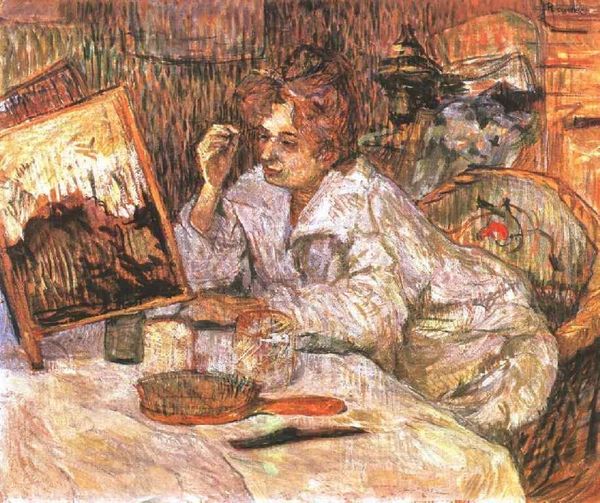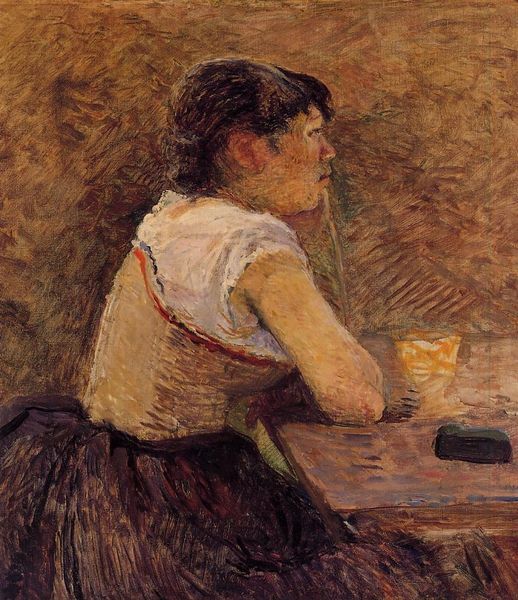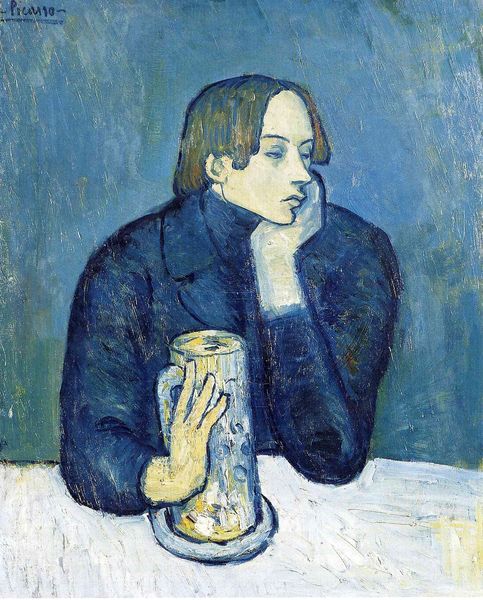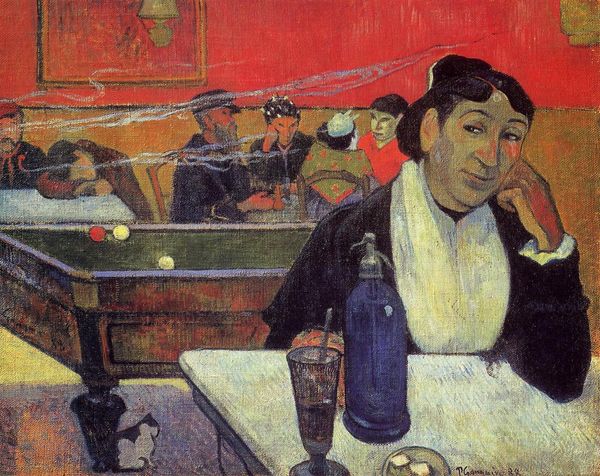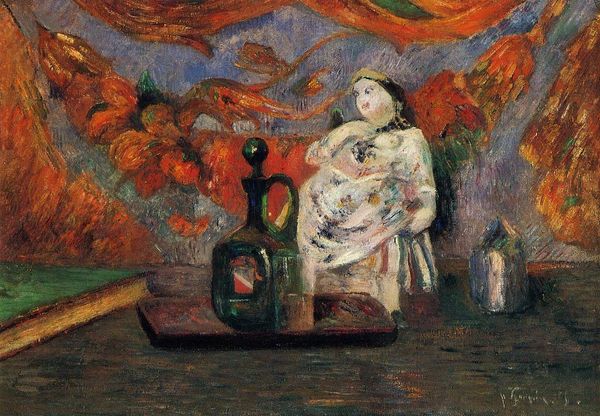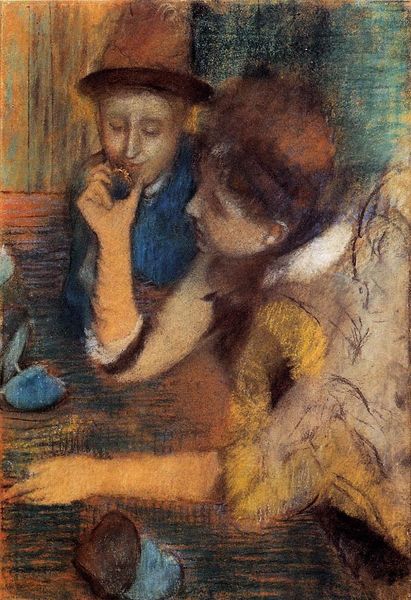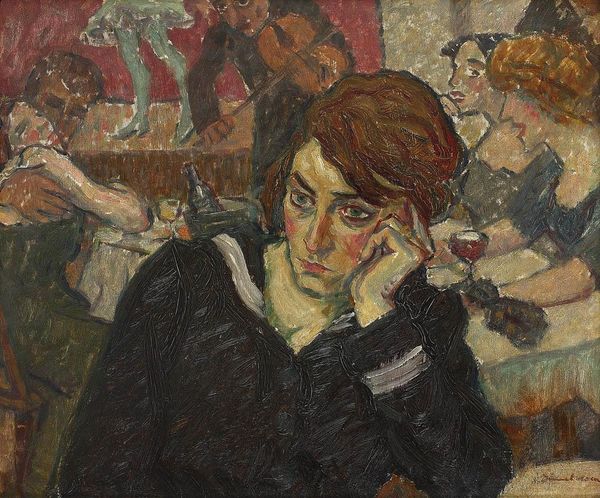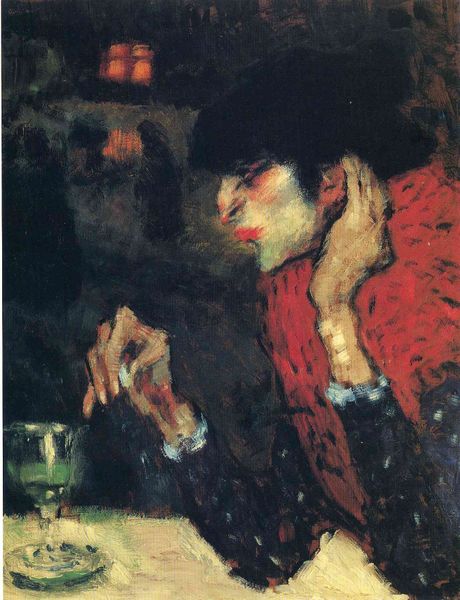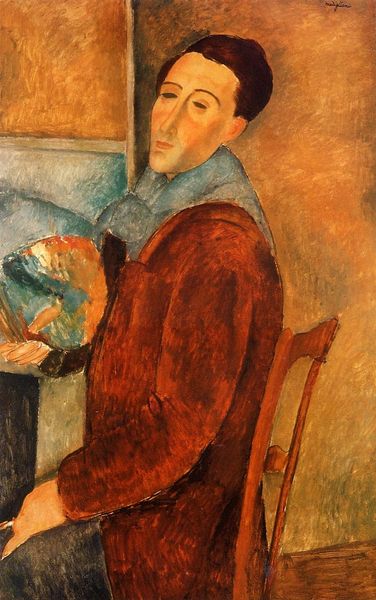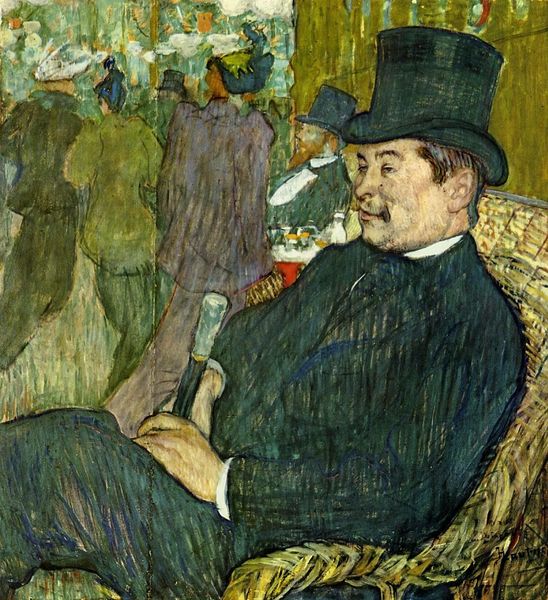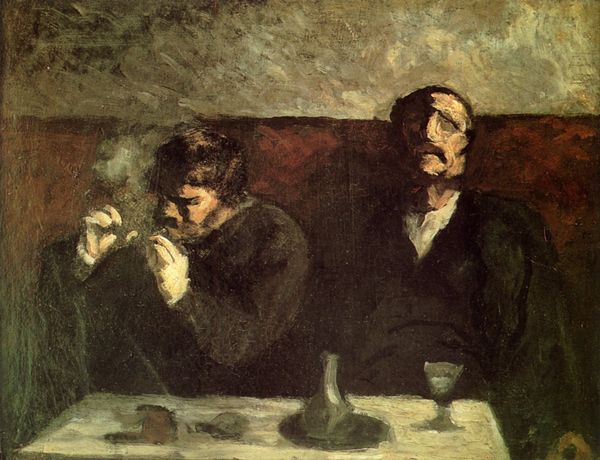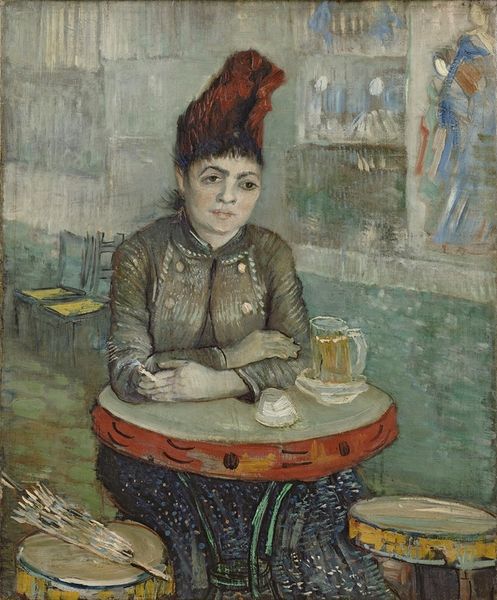
painting, oil-paint
#
portrait
#
painting
#
impressionism
#
oil-paint
#
oil painting
#
cityscape
#
genre-painting
#
post-impressionism
Copyright: Public domain
Editor: Here we have Henri de Toulouse-Lautrec's "Hangover" from 1889, rendered in oil paint. There's a palpable weariness about the woman depicted; it’s as though the colors themselves are heavy. What catches your eye in this piece? Curator: For me, the focus rests on how Toulouse-Lautrec represents labor, both physical and emotional, through his use of materials. Consider the quick, almost frantic brushstrokes—they mirror the frenetic energy of Parisian nightlife, but also hint at the laborious and often exploitative conditions behind the entertainment industry that supported it. Editor: That's a great point about the brushstrokes mimicking Parisian nightlife. It also feels intensely personal. Is there more to it than just a commentary on nightlife? Curator: Absolutely. Look at the materiality of the paint itself – thick in some areas, thin and washy in others. This is not just about capturing an image, but about the physical act of making, mirroring the ‘labor’ of both subject and artist. The visible brushstrokes deny any attempt at illusionism, drawing attention to the process of creation. How does that process comment on class and value? Editor: I hadn't considered the paint application as a deliberate choice, suggesting class disparities. I was viewing the scene from the perspective of the sitter in that bar. The material tells us something else. It suggests… exhaustion on both sides of the canvas, from model to painter? Curator: Precisely! The flattening of perspective, another material element, serves to bring us closer to the subject’s space, collapsing the distance between viewer and viewed, and potentially implicating us in the societal structures that produced this scene. Do you agree? Editor: I do. Viewing it through this lens gives the image so much more depth. It isn’t just a depiction; it’s an examination of production and exhaustion within a social setting. Curator: Indeed. And hopefully, by attending to the materials and labor that produce such an image, we become more attuned to the hidden labor that constructs our own social realities.
Comments
No comments
Be the first to comment and join the conversation on the ultimate creative platform.
